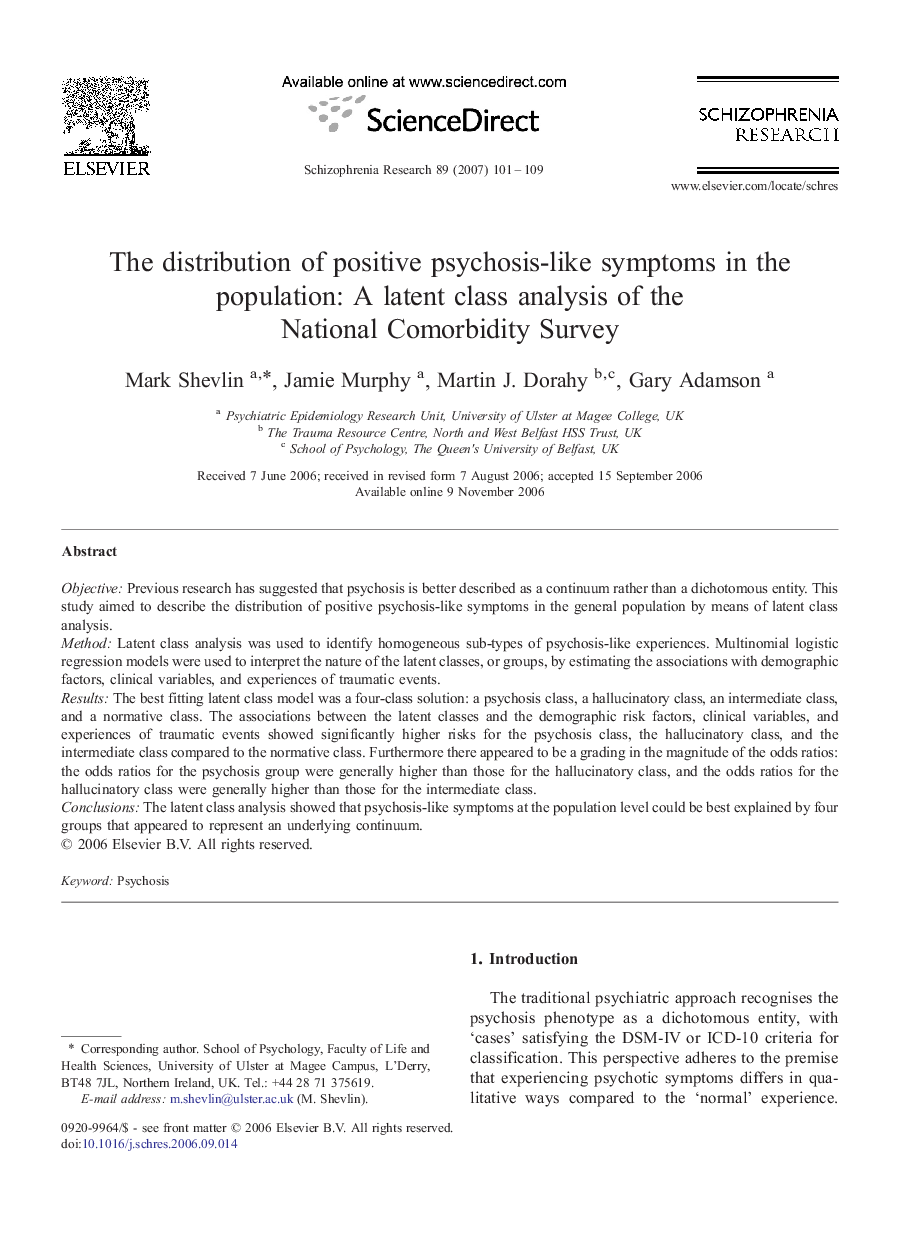| کد مقاله | کد نشریه | سال انتشار | مقاله انگلیسی | نسخه تمام متن |
|---|---|---|---|---|
| 339693 | 548106 | 2007 | 9 صفحه PDF | دانلود رایگان |

ObjectivePrevious research has suggested that psychosis is better described as a continuum rather than a dichotomous entity. This study aimed to describe the distribution of positive psychosis-like symptoms in the general population by means of latent class analysis.MethodLatent class analysis was used to identify homogeneous sub-types of psychosis-like experiences. Multinomial logistic regression models were used to interpret the nature of the latent classes, or groups, by estimating the associations with demographic factors, clinical variables, and experiences of traumatic events.ResultsThe best fitting latent class model was a four-class solution: a psychosis class, a hallucinatory class, an intermediate class, and a normative class. The associations between the latent classes and the demographic risk factors, clinical variables, and experiences of traumatic events showed significantly higher risks for the psychosis class, the hallucinatory class, and the intermediate class compared to the normative class. Furthermore there appeared to be a grading in the magnitude of the odds ratios: the odds ratios for the psychosis group were generally higher than those for the hallucinatory class, and the odds ratios for the hallucinatory class were generally higher than those for the intermediate class.ConclusionsThe latent class analysis showed that psychosis-like symptoms at the population level could be best explained by four groups that appeared to represent an underlying continuum.
Journal: Schizophrenia Research - Volume 89, Issues 1–3, January 2007, Pages 101–109